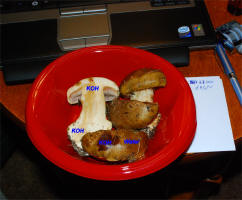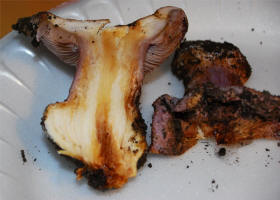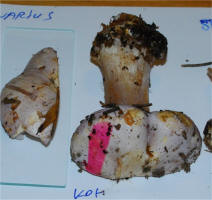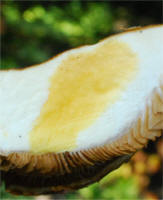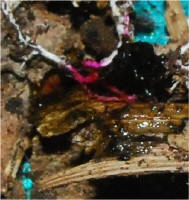a) Cap and Surface Detail -- it is important to see if there are veil patches, and appreciate the type of pileal covering.
b) Gills -- check the attachment (typically sinuate) and also whether the edges are even.
c) Context -- the coloration and potential discoloration of the context are critical diagnostic characters.
d) Veil color -- veil color is a critical diagnostic feature, but it is not always apparent when buttons are not available. It can be judged by other means, l;ike remnants on the stipe, bulb, etc.
| Some Examples of Group Portraits |
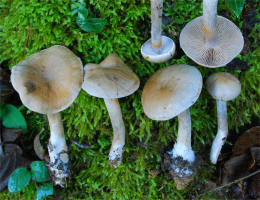 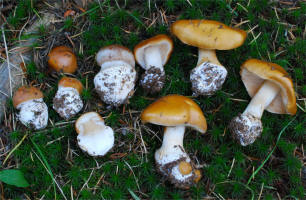 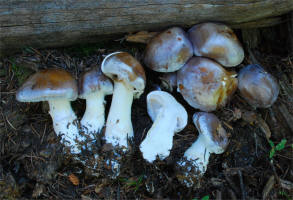 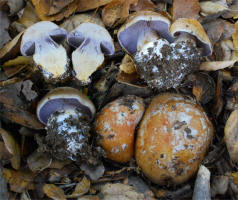  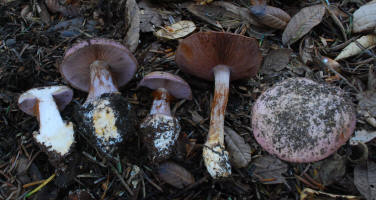 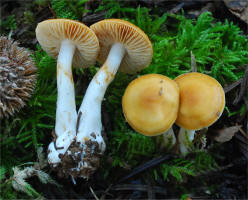 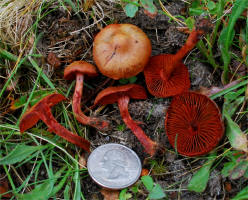 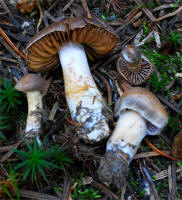 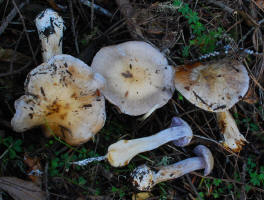 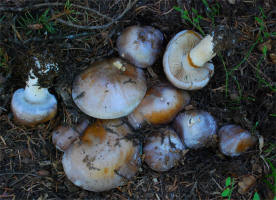 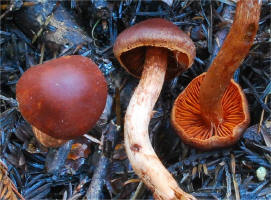 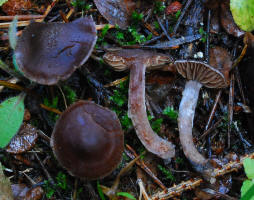 |
Conifer -- some basic idea of the kind of conifers is important. There are huge differences between Douglas Fir, Coastal Pines, Montane Pines, True Firs, Spruce, Hemlock. This can be very critical diagnostic feature. In the Spruce parts of California we see different Corts than in the Live Oak Mediterranean part...
Broadleaved -- specify the basic trees -- Oak, Tanoak, Madrone, Manzanita, California Bay, etc.
Mixed -- still some basic idea is important -- is it a typical Inland Pine/Oak, or the Coastal Redwood/Doug Fir/Tanoak. A note on the presence/absence of Tanoak is very important
| ADDITIONAL
OBSERVATIONS Odor: Most Corts are void of interesting odors, but some have very diagnostic such. Cortinarius albofragrans (commonly under Live Oak) has a very fragrant odor. Taste: Too much to ask for most people, but in some cases this is very diagnostic -- Cortinarius infractus can be ascertained that way Bruising Reactions: Note any interesting discoloration as a results of handling and injury. There are several species that are uniquely identified by their bruising reaction. |
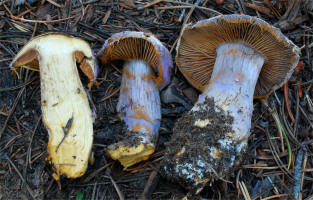 Cortinarius traganus -- the combination of odor, context and overall color define this species in the field quite easily |
